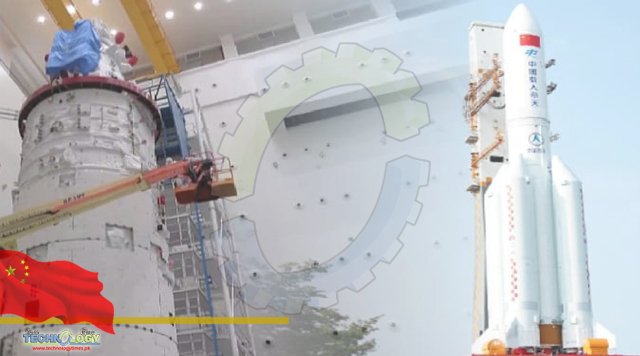The Mengtian lab module, the final section of the basic structure of the China Space Station, completed its planned propellant fueling on Sunday, the Global Times learned from the China Manned Space Agency (CMSA).

According to the CMSA, the Mengtian, after arriving at the Wenchang Space Launch Site in South China’s Hainan Province, has completed work including general assembly and testing, and it will carry out a joint examination with the Long March-5B Y4 carrier rocket. Mengtian lab module, Facilities and equipment at the Wenchang spaceport are in good condition, and all systems related to the examination and testing duties are preparing in an orderly manner, the CMSA said on Monday. The Long March-5B Y4 carrier rocket, which is to ferry the China Space Station Mengtian laboratory module into orbit, arrived at the Wenchang Space Launch Site on September 3. China is gearing up smoothly to complete the building of the country’s first space station with the Mengtian – the third and last section of the basic three-module T structure and the second lab module following Wentian – to be launched and connected to the current space station combination in October. Compared with the Wentian module that was launched in July and is hosting experiments with a focus on space life sciences, the Mengtian module will focus on microgravity scientific research. It is equipped with experimental cabinets for fluid physics, materials science, combustion science, basic physics and space technology experiments. Mengtian also has a payload airlock, allowing the station’s small robotic arm to take science payloads and install them on an experiment platform on the module’s exterior.
Mengtian lab module, Zhang Wei, director of the Space Utilization Development Center, Technology and Engineering Center for Space Utilization, under the Chinese Academy of Sciences, revealed previously that Mengtian will carry the world’s first space-based cold atomic clock system consisting of a hydrogen clock, a rubidium clock and an optical clock. “If successful, the cold atomic clocks will form the most precise time and frequency system in space, which will not lose one second in hundreds of millions of years,” said Zhang. On September 30, the Wentian lab module carried out an in-orbit transposition and docked with the side port of the space station’s node cabin. Lasting around one hour, the operation was the result of cooperation between the Shenzhou-14 crew onboard and professionals on the ground. It was the first time that China completed the in-orbit transposition of a large-scale spacecraft cabin by applying transfer facilities, the CMSA said. After the transposition of Wentian, the space station combination is now orbiting Earth in an L-shape and after Mengtian’s docking and rendezvous with the combination, the combination will turn into a T-shape, the agency noted. China has also started the selection process of the fourth batch of taikonauts to join future manned space missions, the CMSA disclosed in early October. Twelve to 14 candidates are expected to be chosen, including seven or eight pilots. Engineers as well as payload experts will also be selected to join the force, the CMSA said, stressing that the posts of payload experts are also open to applicants from the Hong Kong and Macao special administrative regions for the first time. The Astronaut Center of China is training the third group of 18 astronauts before they are certified for space missions. China has 21 astronauts in total from the first and the second generations, and 14 have taken part in nine missions, including the latest Shenzhou-14 mission.
Source: This news is originally published by globaltimes